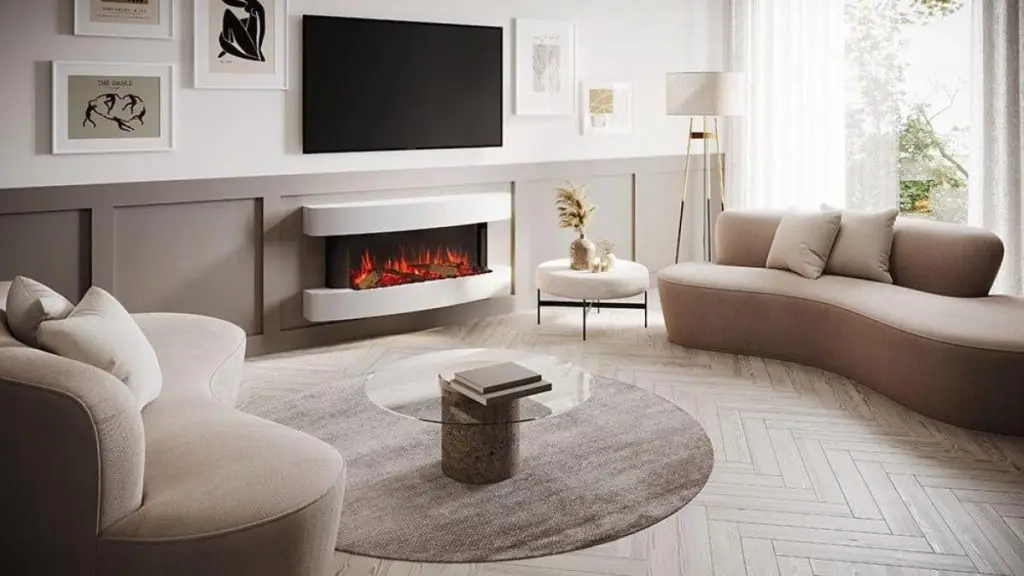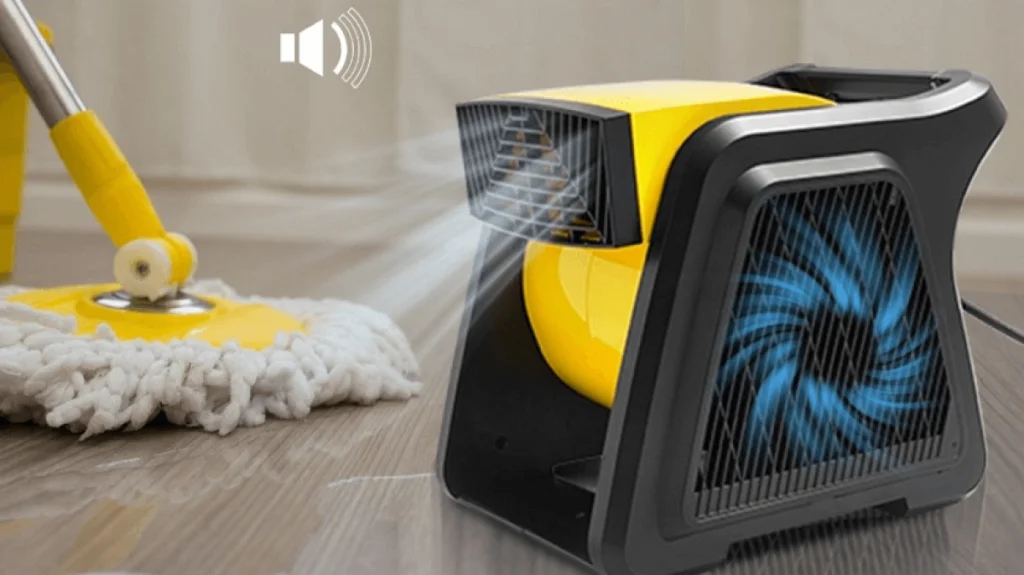Electric fireplaces have become an increasingly popular option in recent years. Not only are they seen as superior alternatives to wood or gas fireplaces, but they also provide coziness and ambience associated with a real fire without the hassle. But many wonder about their energy efficiency—do electric fireplaces use a lot of electricity? Are electric fireplaces energy efficient?
In this article, we will cover everything related to the energy efficiency, consumption and running costs of electric fireplaces. Additionally, we will give workable tips for how to lower electric consumption by electric fireplaces.
Energy Efficiency of Electric Fireplace: An Overview
Electric fireplaces have been recognized for their energy efficiency. The process of using electricity to generate heat is considered 100% energy-efficient. They convert nearly all of the power they draw into heat—meaning each unit of electricity consumed translates directly into the warmth for your home!
Besides efficiency, electric fireplaces feature energy-saving features like timers and thermostats to improve energy savings. These features allow users to regulate the usage, ensuring the fireplace operates only when needed and maintaining a desired temperature.
We will talk about the costs below in more detail, but as far as costs are concerned, they are affected by the heating settings chosen and flame intensity selected. Higher temperature settings and brighter flames tend to use up more electricity. Furthermore, frequency and duration are major determining factors; longer or more frequent usage typically leads to increased costs.
In terms of safety and efficiency, electric fireplaces have one advantage over gas fireplaces. Since they don’t require a chimney or special venting, no heat is lost through these avenues. This means that the heat generated by electric fireplaces remains inside the room, providing an efficient and effective source of warmth.
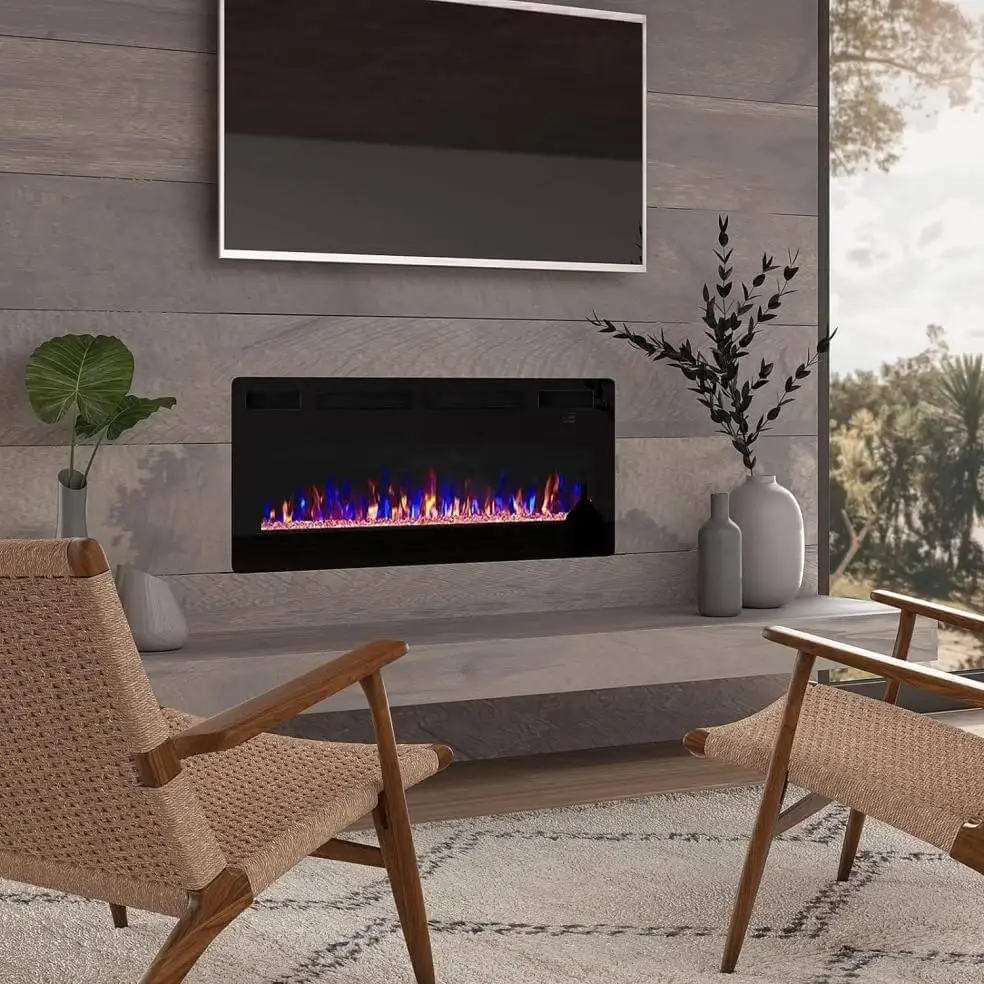
Is an Electric Fireplace More Efficient Than a Wood or Gas Fireplace?
Electric fireplaces are, without a doubt, more energy-efficient than their wood or gas counterparts. According to the Hearth, Patio & Barbecue Association, electric fireplace inserts have been shown to reduce heating bills by a substantial 20-40 percent, something that is a testament to their remarkable efficiency.
As discussed above, electric fireplaces convert almost all the power they use into heat. Comparatively, gas fireplaces, while still considered relatively efficient, convert roughly 70-90% of the energy they use into heat. While this is still commendable, electric fireplaces outperform them by ensuring minimal energy waste.
Talking about wood-burning fireplaces, they lag far behind in efficiency. These traditional fireplaces lose nearly 70% of the heat produced, largely due to the significant heat loss that occurs through the chimney. This inefficiency makes wood-burning fireplaces less effective at heating your home compared to electric options.
Additionally, electric fireplaces are not only efficient but also environmentally friendly. They do not emit smoke, carcinogens, or fumes, which is a significant advantage over wood-burning and gas fireplaces that release pollutants into the atmosphere. This not only benefits the environment but also ensures better indoor air quality in your home.
Are Electric Fireplaces Expensive to Run?
The short answer is: no, they are not expensive compared to gas fireplaces. We will show that below but know that the costs of running an electric fireplace depend upon the wattage of the fireplace and the heating space. Most electric fireplaces are designed to draw around 1,500 watts of power, effectively heating spaces of up to 400 square feet.
Let’s calculate the costs.
Cost to Run Electric Fireplace
To calculate the cost of running an electric fireplace for 6 hours per day, you can use the following formula:
Wattage (1,500 watts) x Duration (6 hours) = Total Watt-Hours per day
In this case, it’s 1,500 watts x 6 hours = 9,000 watt-hours or 9 kilowatt-hours (kWh) per day.
Now, based on the national average kilowatt-hour (kWh) rate of 23 cents, running a 1,500-watt electric fireplace for 6 hours per day would cost you approximately:
9 kWh x $0.23 (23 cents) = $2.07 per day.
Over a month (30 days), the cost of operating the electric fireplace for 6 hours daily would be:
$2.07 per day x 30 days = $62.4 per month.
It’s important to keep in mind that these calculations are based on the national average electricity rate. Actual electricity rates can vary widely depending on your location. For example, in some states, the rates are around 11-14 cents per kWh—that would make the monthly cost around $32 in those states.
Electric vs. Gas Fireplaces Costs
Comparing the cost of running electric fireplaces to gas fireplaces reveals a significant cost disparity. Gas fireplaces can cost approximately $0.70 per hour to operate—per month, the costs would become $126 if we have to keep it running for 6 hours. That’s significantly more expensive—almost 100 percent—than electric alternatives.
Keeping in view the above, electric fireplaces are a budget-friendly choice for those seeking a cozy ambiance without straining their wallets.
Tips for Reducing Electricity Consumption of Electric Fireplaces
While electric fireplaces are energy efficient, there are still ways to optimize their usage and minimize electricity consumption. Below, we have listed a few.
1. Use a Programmable Thermostat
Many electric fireplaces come equipped with programmable thermostats. These allow you to set a specific temperature for the room. Once the desired temperature is reached, the fireplace will automatically adjust its heating output or shut off. This not only ensures a comfortable room but also prevents unnecessary energy use.
The electric fireplaces designed at VEVOR feature a sleep mode that maintains a constant heating temperature between 60 to 99 °F and an adjustable timer that can be set from 0 to 12 hours.
2. Zone Heating
Electric fireplaces are excellent for zone heating. Instead of heating your entire home, focus on the rooms you’re using the most. Using your electric fireplace to heat your room, you can turn down the central heating system, reducing your overall energy consumption.
3. Opt for Energy-Saving Modes
Some electric fireplaces have energy-saving modes, such as “Eco” or “Standby.” These modes reduce the fireplace’s energy consumption without compromising on warmth. Utilize these modes when you need less heat or are stepping out of the room.
4. Proper Insulation
To maximize the efficiency of your electric fireplace, ensure that the room is well-insulated. Seal any gaps or cracks around doors and windows to prevent heat loss, resulting in less reliance on the fireplace.
5. Timers and Remote Controls
Take advantage of timers and remote controls if your electric fireplace includes these features. Set a timer to turn off the fireplace after a specific duration, or use the remote control to adjust settings from the comfort of your couch. This minimizes unnecessary energy use when you forget to turn off the fireplace.

6. Optimize Flame Settings
Adjust the flame intensity to your comfort level. A lower flame setting consumes less energy while still providing a cozy atmosphere. You can enjoy the visual appeal without running the fireplace at maximum heat output.
Energy Efficiency of VEVOR Electric Fireplaces
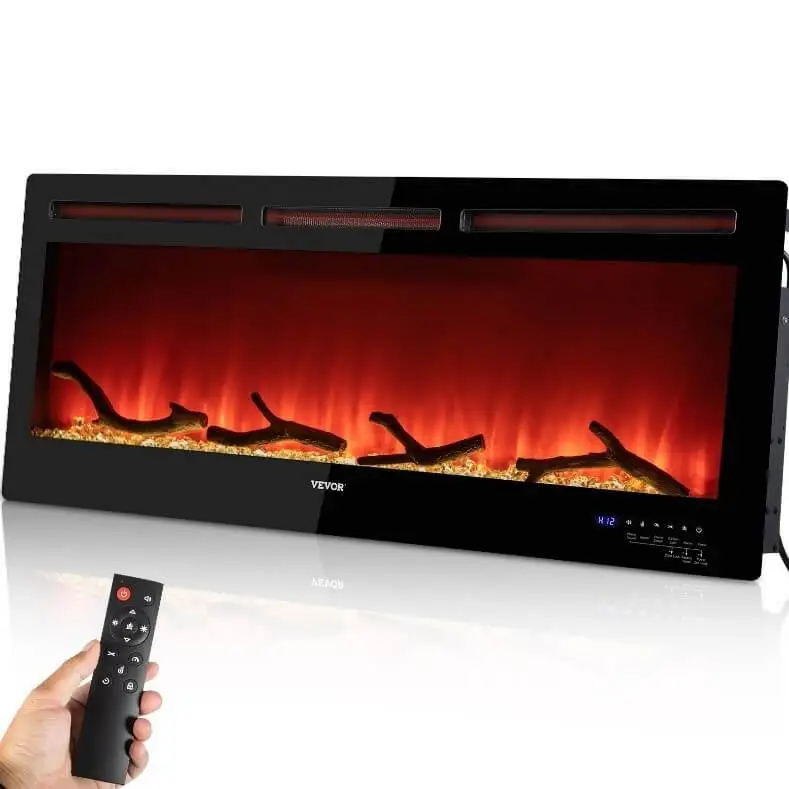
VEVOR Electric Fireplaces are celebrated for their energy-efficient performance, designed to enhance the ambiance of your living space and reduce your energy bills. One key feature contributing to their efficiency is the utilization of LED technology, which creates realistic flames while consuming significantly less energy compared to traditional fireplaces.
The power consumption of VEVOR Electric fireplaces is 1500 watts, irrespective of the size you choose. This efficient energy usage ensures that you can enjoy the cozy warmth of your fireplace without causing a significant spike in your electricity costs.
VEVOR Electric Fireplace Features
What sets VEVOR Electric Fireplaces apart is the rich array of features designed to cater to various preferences and needs.
These features, among others, include:
1. Adjustable Flame Colors: VEVOR Electric Fireplaces offer a spectrum of flame colors that can be customized to suit your mood and decor. Specifically, you can choose from combinations of 12 flame colors, 5 flame speeds, and 5 brightness levels.
2. Adjustable Thermostat: The ability to adjust the thermostat allows you to maintain your desired room temperature effortlessly and reduce the electricity costs of running an electric fireplace.
3. Sleep Mode: A valuable feature that helps conserve energy by maintaining a constant heating temperature, ensuring you remain warm and cozy throughout the night.
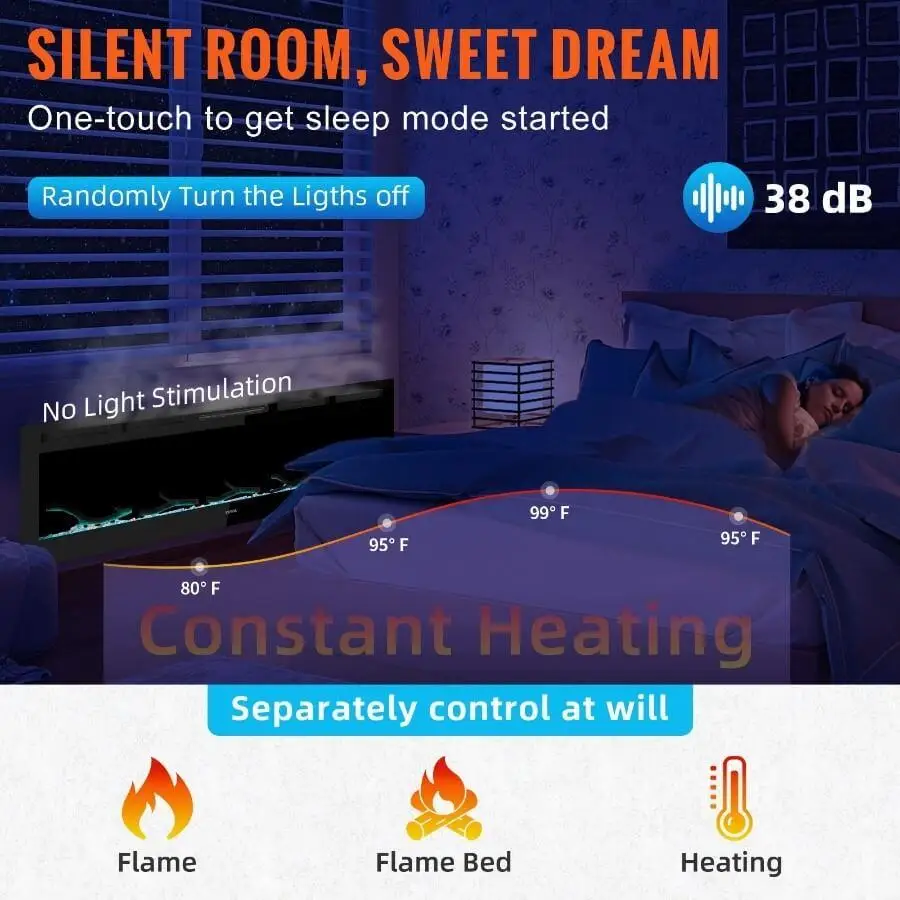
4. Voice Control and Remote: VEVOR Electric Fireplaces are equipped to integrate with voice assistants like Amazon Alexa, enabling you to control your fireplace remotely with voice commands. Additionally, they come with a user-friendly remote control for convenient operation.
5. Timer: You can set the fireplace to operate for a specified duration, providing both convenience and energy savings.
6. Different Sizes: VEVOR offers various sizes to accommodate the needs of small to large rooms. Between 36-inch to 60-inch fireplaces, you can choose a few sizes that go well with your home’s dynamics and visual appeal. Other options include a 42” electric fireplace and a 50” wall-mount/recessed fireplace.
Conclusion
Electric fireplaces are an efficient and eco-friendly heating option among the various available options. Their ability to create an inviting ambiance without high energy bills makes them an excellent choice for modern homes. For those looking to enhance their living space with these efficient heating solutions, we encourage you to explore some of VEVOR’s electric fireplaces. Their innovative features and stylish designs add a touch of sophistication to any room.

